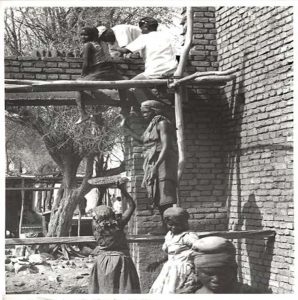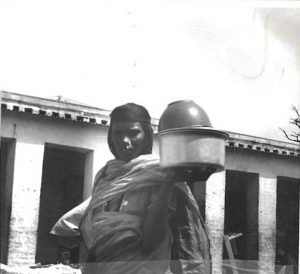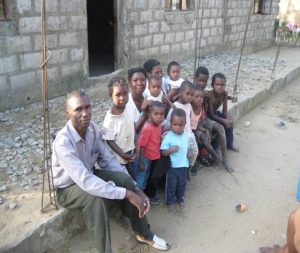39 Poligamy in Eastern Africa
Polygamy in Sub-Saharan Africa
Polygamy has a long tradition in Africa including the mostly Islamic North Africa where the Koran allows a man to have up to four wives. Even in the Old Testament, polygamy occurs in a number of circumstances. In Sub-Saharan Africa, the tradition goes back thousands of years. I will describe the circumstances in Sudan, South Sudan and Mozambique. See map.
 Case studies of Polygamy in eastern Africa
Case studies of Polygamy in eastern Africa
Sudanese Polygamy
In Arabic Sudan during the mid-1970’s, polygamy serves the very wealthy and the very poor, but not the middle class or the high school educated. Normally the middle class is represented by more educated people some who have studied a broad and have adopted western ways but also feel they cannot afford such a large family. In the harem of the wealthy, wives are treated like royalty. Usually they are sequestered in their luxury only to interact with their husband and close family.
Often this leads to great boredom for the single wife since she is isolated much of the time. The culture is such that men and women talk very little to each other. Frequently the husband does not relate to his wife in any deep communications but saves those discussions for his male friends. Hence, Sudanese women can become quite lonely. One solution for the first wife is to petition her husband to marry a second wife so she will have someone with whom to talk. The husband is usually not opposed to this and often enlists her to find an additional wife. Eventually, the Arab man will often find himself married to a group of sisters or former classmates of the first wife.
Sub-Saharan Africa
In Sub-Saharan Africa polygamy is a normal occurrence. Actually it serves as a social-security system for women. How can that be?
First place it is hard to find a suitable husband. This is because fewer boys survive childhood diseases than do girls. In addition, many African men are not in a financial position to support a wife and children.
Another reason supporting polygamy in Africa is that women must have children to take care of them in their old age. It is risky to marry a single man since he has no record of siring children and he may not be able to make her pregnant. If a man already has children, then a woman thinks she has a good chance of having children if she joins his harem. Her children will be sure to support her in old age.
Children are Assets
Children are a major part of the labor-intensive farming processes and hence enable a family to enlarge the size of their cultivated land. The older children take care of the younger ones allowing the mother to have the freedom to direct the farming processes as well as have more children. With lots of children a woman obtains a major level of esteem in the community. On a practical level, she has the assurance of having several adult children to care for her in her old age. The five children that she may have are programed from the earliest age to take care of their parents whenever they can. Normally each woman has her own sleeping quarters which she shares with her smallest children and with her husband when he so desires.
A Bigamist example
I have had a couple of personal experiences interviewing the families with two wives. The first involved a visit to the household of a man with two wives. This was near Khartoum; and he had just married the second wife. When my wife and I arrived at the home, the first wife was busy in the kitchen preparing the meal while the new wife was in charge of entertaining us.
We met the second wife in her room where she had an array of furniture in addition to a bed. If my wife had not been with me, I would not have been able to meet her in her room. But she wanted to interact with Mary, my American wife. We were fine with that and I was prepared to translate, since Mary spoke no Arabic. This provided me a unique opportunity to interview a married Islamic woman. So as the person in the middle I could ask questions about “What was it like being a second wife and why did she agree to joining the harem?”
She said she was happy as a second wife and said that she would be able to fulfill her husband’s wishes for children because wife #1 had not been able to get pregnant. (This assumes that the first wife was infertile and not the man.)
We asked about equality and she took us to the first wife’s bedroom to see that everything was identical to her room: the same wardrobe, tables, beds and lanterns. Both rooms were painted blue and we were unable to detect any differences.
When dinner was ready, food was served to the men on a giant tray full of a variety dishes including various meats, okra, cheeses, vegetables, salads. All of this was eaten without utensils and the right hand was used exclusively for eating.
Once the men had finished eating, the tray of picked-over leftovers was taken to the women who then ate what they wanted. My wife, Mary, was appalled by this picked over food. After that she would never go with me on my cultural adventures.
Polygamy in Darfur
While traveling alone in Geneina in western Sudan, I had a chance to observe many cultural activities in the town. I was able to watch the process of a small building being constructed. The crew was made up of one man, his four wives and one teenage son.

Two of the wives had babies tied to their backs while carrying bricks and clay hod up the ladder. One wife was mixing the clay for the hod. Another wife went off to prepare the noon meal which she brought for the group.

Then the man and son ate what they wanted and waved for the four wives to come eat. They hovered around the tray eating what was left. A few items were given to the two babies. This was also the time when the two babies were nursed.
Then the man and son ate what they wanted and waved for the four wives to come eat. They hovered around the tray eating what was left. A few items were given to the two babies. This was also the time when the two babies were nursed. (Photos by Rick Bein 1976)
Bigamy in South Sudan
The third experience with bigamy was when I was traveling in southern Sudan (now known as the Republic of South Sudan). Bigamy is when the man only has two wives. I was traveling on foot with some of my southern Sudanese students. We stopped at the home of one of their former teachers who was an English teacher in the local high school and he was happy to talk with me.
He had two wives in his compound of straw huts. Each wife had her own hut. Both had children, and seemed happy.
I noticed a Catholic rosary on the table and I asked if he was a member of that religion. “Yes, I am one of the elders in our local church”
“How can you be Catholic and be polygamous? The Catholic Church does not approve of Polygamy.”
“This is Africa! The church always looks the other way. You will never take polygamy out of Africa.”
I asked if he had any regrets about having two wives. He said no, but then I asked him if he would marry two women again if he could start over. He thought for almost a full minute and then in a very sad voice said, “Don’t do it!”
Why not?
He responded, “I never have any peace. When I do something for one wife, I must repeat it for the other wife. I never seem to even things out. It gives me a great head ache.”
Later, back in Khartoum, I spoke of this with my northern Sudanese friends who told me that he needed two more wives to balance out the situation. Their anecdote explained. “When there is one wife, she is bored; when there are two wives, they gang up on the husband; when there three wives, two wives gang up on the other wife; but when there are four wives everything is in balance.
Bigamy in Mozambique
While living in Mozambique in 2002-2003 I had the opportunity to visit a bigamous family with 8 small children. The family spoke Shangaan while the husband also spoke Portuguese. Since I am fluent in Portuguese I was able to interact and ask many questions


The family seemed to be quite happy; the father was able to work sporadically, in order to provide food for this large group. He claimed that there were no marital problems and that the wives got along and worked together to maintain the domestic part of the family. The women felt very lucky to be in this relationship where they could have children and have a roof over their heads. As some of the children matured, they would be old enough to baby sit while their moms could go off to work. Later some of the brighter boys would go on to school and get jobs that earned income enough to send extra money to his mother if she was in need. Usually, the daughters would stay around to help mom with the very personal things. These girls would frequently stay longer until they were married. In some instances, they might take mother to their husband’s home where she would be accommodated in separate quarters. Photos by Rick Bein 2004
Polygamy in Africa has evolved over a melena of time and is working in the current social system where women have a kind of social security bur are also subservient to men. There is safety in polygamy; women are secure with their children helping out as house maids, farm laborers and caretakers in her old age.

